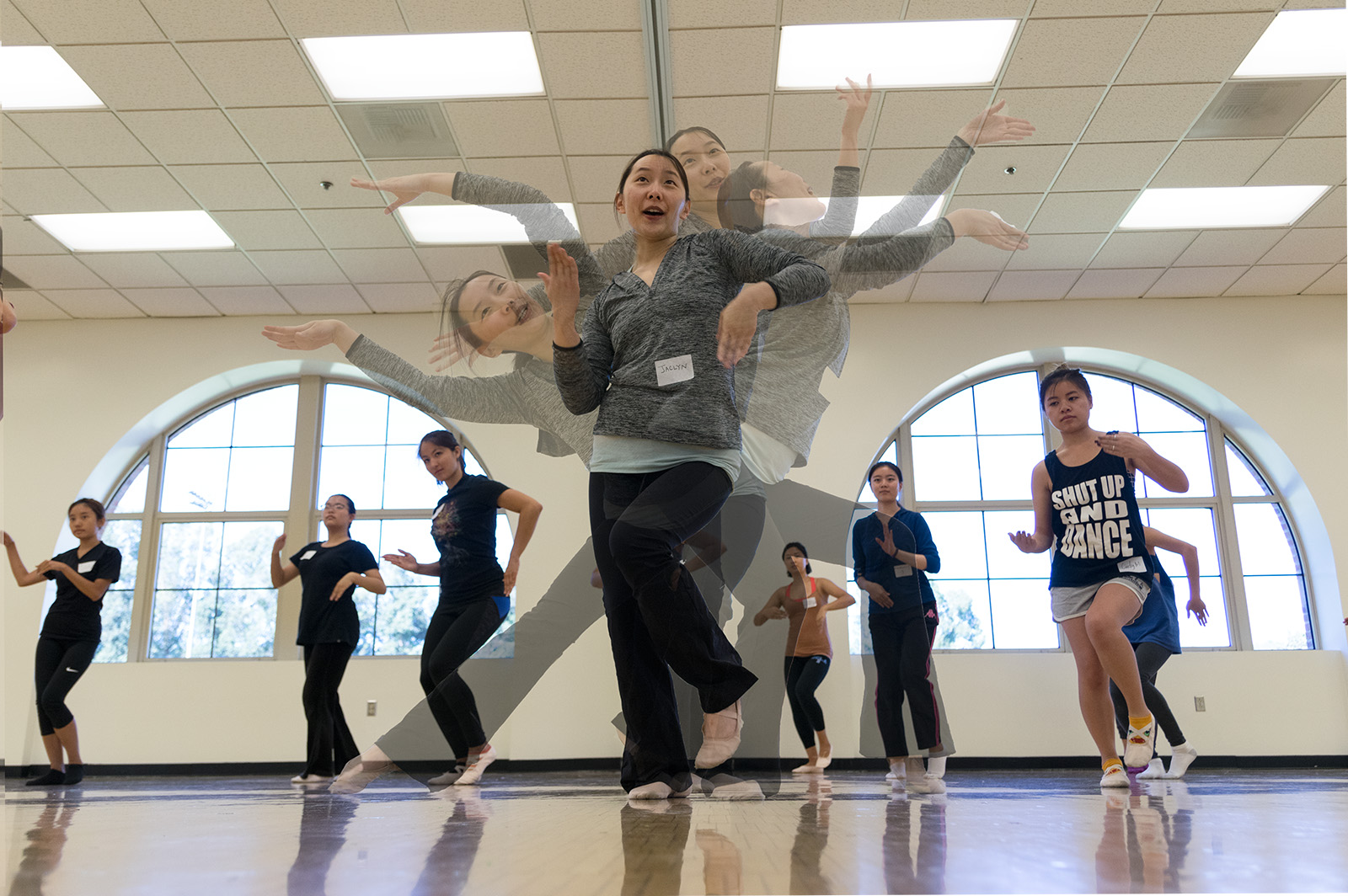Dance Break: Chinese Cultural Dance Club fuses diverse traditions with modern dance

The Chinese Cultural Dance Club held an audition workshop Oct. 7. During the workshop, attendees learned two different pieces of modern choreography that were influenced by different Chinese traditions from various areas and time periods. (Photo by Michael Zshornack/Photo editor, Photo illustration by Amy Dixon/Assistant Photo editor)
By Christi Carras
Oct. 30, 2017 9:35 a.m.
Daily Bruin columnist Christi Carras’ limited dance background consists of bingeing episodes of “So You Think You Can Dance,” grapevining her way through high school show choir and stumbling through rehearsals at a daycare-like dance studio until the age of 8. As a personal experiment, she attended workshops and lessons for 10 campus dance groups fall quarter and documented her experience as a nondancer for Dance Break.
Advice for making any movement feel more graceful: Just add fans.
I attended the Chinese Cultural Dance Club’s audition workshop taught by Jaclyn Yuan on Oct. 7 and danced with fans for the first time. Throughout the lesson, I learned two pieces of modern choreography influenced by traditions from different areas and time periods of China.
A few minutes into the warmup stretch, Yuan began demonstrating how to turn into a human bobblehead – yes, you read that correctly.
I looked on in awe – and also with a slight amount of discomfort – as Yuan lowered into a squat position and wiggled her head side to side while the rest of her body remained stationary. Trying the movement felt like a futile attempt to master a new party trick.
I can’t wiggle my ears or touch my tongue to my nose – nor can I seemingly detach my head from my neck like Yuan. But after a couple minutes of practice in the mirrors of the John Wooden Center’s Pyramid Room, I managed to resemble a bobblehead – albeit one that was dusty, old and missing a couple springs.
When executed correctly, however, Yuan said the move is meant to begin the Jichu dance on an ominous note. The performers are typically masked, adding to the eeriness of the opening.
The modern Jichu costumes and choreography are inspired by the Tang dynasty, reflecting how people worshipped mystical creatures for luck, Yuan said. The dance is typically performed by women in an effort to summon the spirit of the phoenix and bless China with prosperity and good fortune, Yuan said.
I tried keeping the cultural influences of the dance in mind to take advantage of the dance’s slow pacing, focusing on important intricacies like hand positioning and head direction.
I appreciated the stop-and-go nature of the movements. For a few counts, we traced the calming instrumental melody with snakelike arms and subtle shifts in leg weight, only to throw our entire bodies to one side on the next beat of the drum.
Dance lesson number two, however, transported us to another culture entirely. The Mei-A-Li, another piece usually performed by women, is based on traditions and sensibilities of the Korean-Chinese community in northeastern China and is intended to showcase strength and beauty, Yuan said.
To compensate for the lack of drums – which are the usual props for the Mei-A-Li – Yuan passed out circular fans with a floral pattern as placeholders. The fans made the already-elegant style of the movement feel even more beautiful.
But as the history of the dance suggests, the graceful quality of the steps was often a facade for the significant amount of core strength necessary to perform the movements – it definitely warranted skipping a daily ab workout.
We began the dance on our knees, our sides facing the front of the room. Moving with painstakingly slow precision, we tilted our torsos backward while keeping our back and stomachs in a perfectly straight line. The intense core control caused even Yuan’s abdomen to quake ever so slightly.
From there, we collapsed into ourselves at the stomach, allowing our fans to extend forward as we arched our backs slowly toward the hardwood floor. The rest of the dance followed much of the same pattern – gorgeous bodily extensions that masked the endurance-testing means.
I’m not sure I have the physical stamina or general grace to become a competitive Chinese cultural dancer; however, I have discovered a new appreciation for the international genre.


